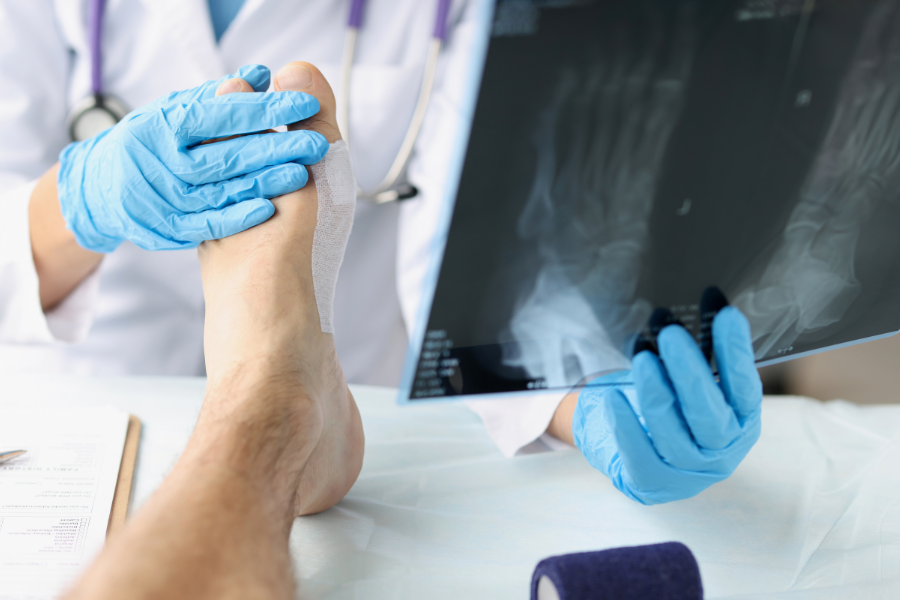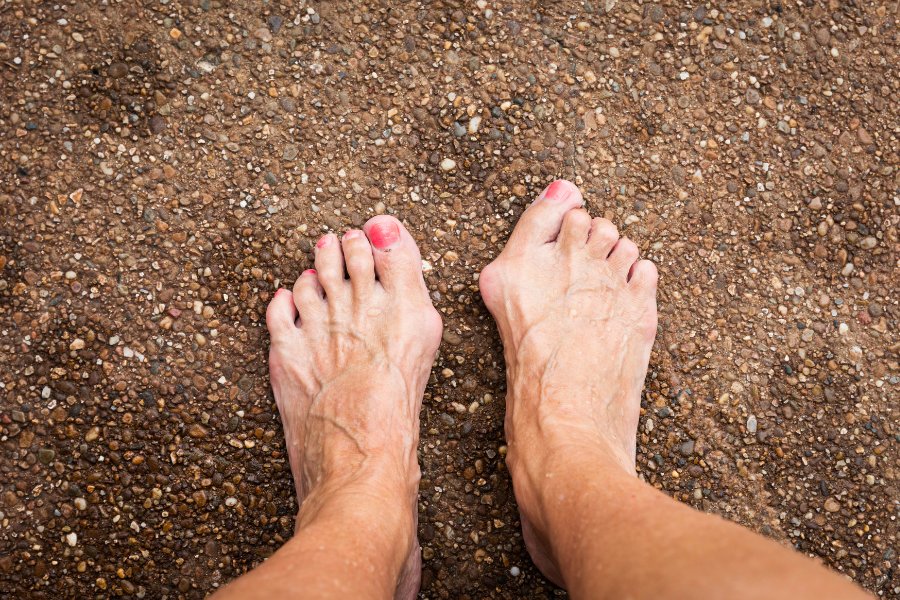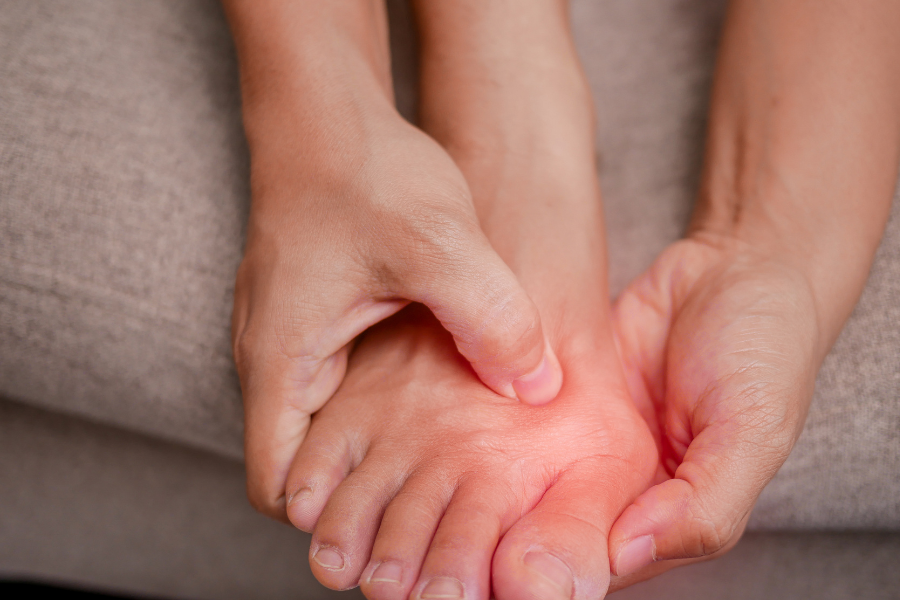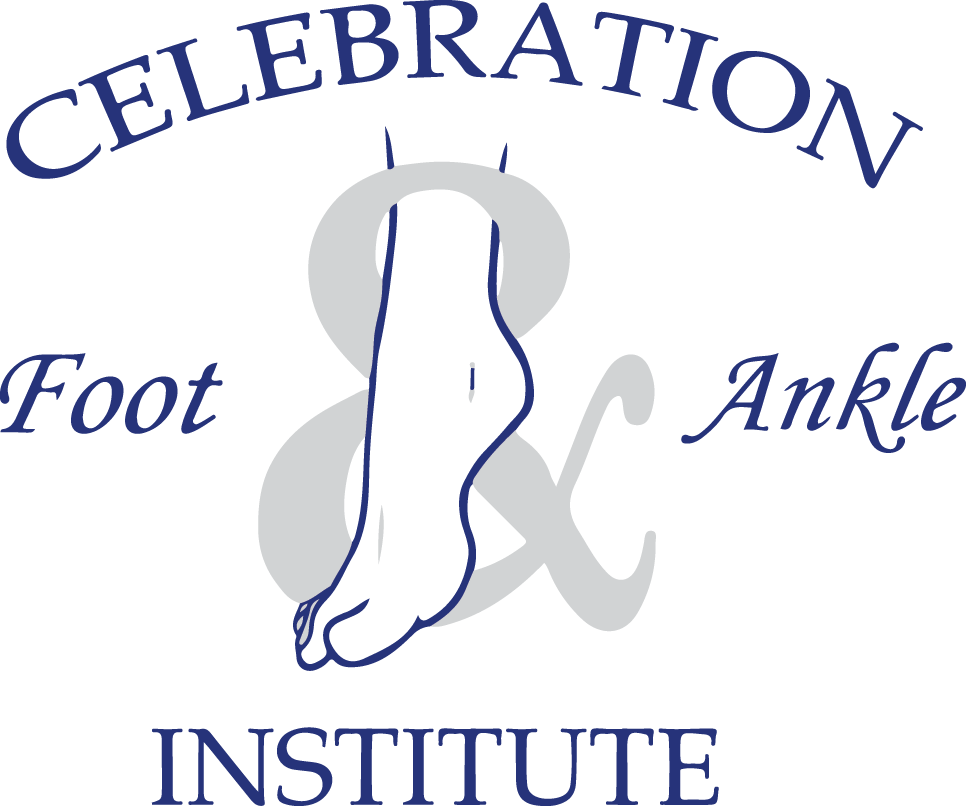
- What Are Hammertoes?
- How to Correct Hammertoes
- What Are the Best Shoes for Hammertoes?
- Hammertoes and Bunions
- Managing Hammertoes and Bunions Together
Hammertoes are a common foot condition that can cause discomfort and pain, impacting your ability to walk comfortably. While the overall prevalence of hammertoes is under 10%, most cases of hammertoes were found in women. In addition, most people with hammertoes also have bunion deformities.
This blog discusses hammertoes, their causes, hereditary factors, treatment options, and the best types of shoes for managing this condition.
What Are Hammertoes?
Hammertoes are deformities of the toes, typically the second, third, or fourth toes, where the toe becomes bent at the middle joint, resembling a hammer. This condition can be classified into two types: flexible and rigid. Flexible hammertoes can still move at the joint, while rigid hammertoes are more severe and may require medical intervention.
What Causes Hammertoes?
Several factors contribute to the development of hammertoes, including:
 1. Improper Footwear
1. Improper Footwear
Wearing shoes that are too tight or have a high heel can force your toes into a bent position, leading to hammertoes over time.
2. Muscle Imbalance
An imbalance in the muscles, tendons, or ligaments surrounding the toe can lead to an abnormal bend.
3. Trauma
Previous injuries to the toe can increase the likelihood of developing hammertoes.
4. Arthritis
Conditions like rheumatoid arthritis can contribute to the development of hammertoes.
Are Hammertoes Hereditary?
Hammertoes can be hereditary. If your parents or grandparents had hammertoes, you might be more prone to developing them. An inherited foot structure or gait can predispose you to muscle imbalances and other conditions that cause hammertoes.
How to Correct Hammertoes
Treatment for hammertoes varies depending on the severity of the condition. Here are some standard methods:
1. Non-Surgical Treatments
- Footwear Changes: To reduce pressure on the toes, switch to shoes with a broader toe box and low heels.
- Orthotic Devices: Custom shoe inserts can help to reposition the toe and relieve pain.
- Exercises: Toe stretches and exercises can improve flexibility and strength in the toe muscles.
- Padding: Cushions and pads can protect the toe from friction and pressure.
2. Surgical Treatments
If hammertoes become rigid and painful, surgery might be necessary to correct the deformity. Procedures can involve repositioning the toe, removing part of the bone, or realigning tendons and ligaments.
What Are the Best Shoes for Hammertoes?
Choosing the right footwear helps with managing hammertoes and preventing further discomfort. Here are some features to look for:
 1. Wide Toe Box
1. Wide Toe Box
Shoes with a wide and deep toe box allow your toes to spread naturally without pressure.
2. Low Heels
Low-heeled shoes reduce the pressure on the front of your foot and toes.
3. Soft and Flexible Materials
Shoes made from soft leather or fabric can conform to the shape of your foot and reduce irritation.
4. Supportive Insoles
Insoles that provide arch support can help maintain proper foot alignment and reduce the strain on your toes.
Hammertoes and Bunions
The development of hammertoes and bunions is often interconnected due to the altered mechanics of the foot. Here are a few ways they are related:
Imbalance and Compensation
Bunions can cause an imbalance in the foot’s structure, leading to compensatory changes in other toes. This imbalance often results in the development of hammertoes as the smaller toes try to adjust to the altered gait and weight distribution.
Shared Risk Factors
Both conditions share common risk factors, such as wearing ill-fitting shoes, genetic predisposition, and underlying conditions like arthritis. These shared factors increase the likelihood of both deformities happening simultaneously.
Increased Pressure
A bunion can alter weight distribution across the foot, increasing pressure on the smaller toes. This increased pressure can lead to the development or worsening of hammertoes.
Progression of Deformities
As bunions worsen, the misalignment of the big toe can cause the smaller toes to deviate from their normal position, contributing to the formation of hammertoes.
Managing Hammertoes and Bunions Together
Management of hammertoes and bunions together requires a comprehensive approach that addresses both conditions. Here are some strategies:
 Proper Footwear: Wearing shoes with a wide toe box, low heels, and good arch support can help reduce pressure on the toes and alleviate symptoms of both conditions.
Proper Footwear: Wearing shoes with a wide toe box, low heels, and good arch support can help reduce pressure on the toes and alleviate symptoms of both conditions.- Orthotics: Custom orthotic devices can provide additional support and help redistribute pressure evenly across the foot.
- Physical Therapy: Exercises and stretches can help improve flexibility, strengthen foot muscles, and reduce discomfort.
- Pain Relief: Over-the-counter pain relievers, anti-inflammatory medications, and ice packs can help manage pain and inflammation.
- Surgical Intervention: In severe cases, surgical procedures may be necessary to correct the deformities. This can involve realigning the bones, removing excess tissue, or fusing joints.
Next Steps for Fixing Hammertoes
Hammertoes can be painful and frustrating, but you can manage and correct them with treatment. If you suspect you have hammertoes, consult a podiatrist to explore your options and find the best treatment plan for your needs. Remember, wearing appropriate footwear and taking preventive measures can significantly affect your foot health and overall comfort.


